Nikon Nikkor AF-S 18-35 mm f/3.5-4.5G ED
8. Vignetting
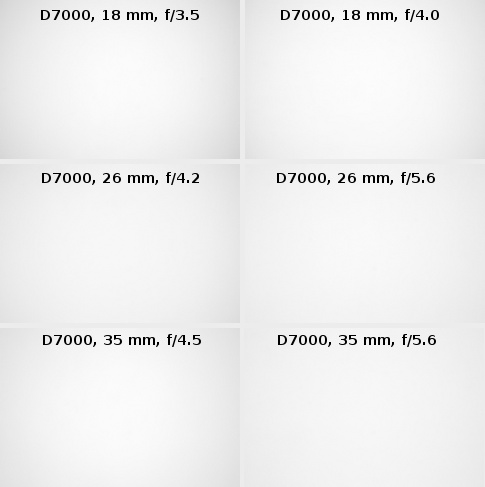
As you can notice, there are no problems whatsoever. At the difficult combination of the wide angle and the maximum relative aperture the brightness loss in the frame corners is barely visible, amounting to just 16% (-0.49 EV). On slight stopping down to f/4.0 the vignetting decreases by next 2%. By f/5.6 that aberration disappears completely because the result we got was 8% (-0.25 EV).
Please Support UsIf you enjoy our reviews and articles, and you want us to continue our work please, support our website by donating through PayPal. The funds are going to be used for paying our editorial team, renting servers, and equipping our testing studio; only that way we will be able to continue providing you interesting content for free. |
- - - - - - - - - - - - - - - - - - - - - - - - - - - - - - - - - - - - - - - - - - - - - - - -
Problems, if you can actually call them so, are even slighter at longer focal lengths. At the combination of 26 mm focal length and f/4.2 aperture the vignetting amounts to 11% (-0.32 EV) and it decreases to 7% (-0.21 EV) on stopping down to f/5.6. At the maximum focal length and by f/4.5 aperture the light fall-off in frame corners is 11% (-0.34 EV) and it decreases to 5% (-0.15 EV) by f/5.6.
Let’s check how the vignetting looks for the full frame sensor of the Nikon D3x.
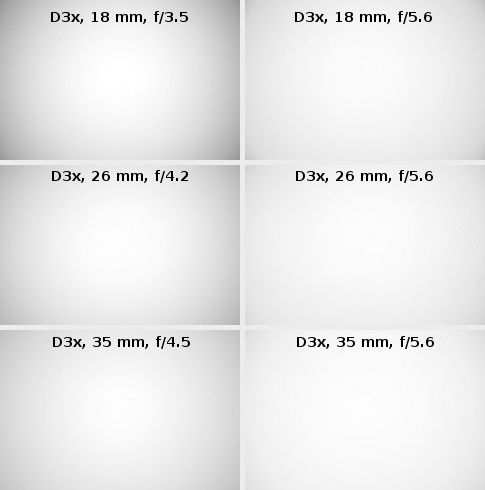
At 18 mm and with the lens wide open the level of that aberration is high, getting to 42% (-1.56 EV). The stopping down to f/4.0 reduces it to 36% (-1.29 EV). By f/5.6 the vignetting reaches 23% (-0.77 EV) and by f/8.0 it is 17% (-0.53 EV). On further stopping down you can’t notice any change in the vignetting level.
The situation improves distinctly when you pass to 26 mm focal length. In that case, at the maximum relative aperture, the vignetting amounts to 29% (-0.98 EV) so it can be still called moderate. By f/5.6 it stops being bothersome, reaching just 16% (-0.40 EV) and by f/8.0 it decreases to 13% (-0.40 EV).
Even a better situation can be observed at the maximum focal length where the brightness loss in frame corners is 23% (-0.77 EV); then it decreases to 13% (-0.39 EV) by f/5.6. On stopping down the lens by the next 1 EV the vignetting becomes imperceptible (9%).
To sum up the tested lens performed quite well in this category. Its results are very similar to those of the Tokina 17-35 mm; the main difference is that the Tokina had a higher vignetting level at the wide angle whereas the Nikkor had worse results at the longer end.
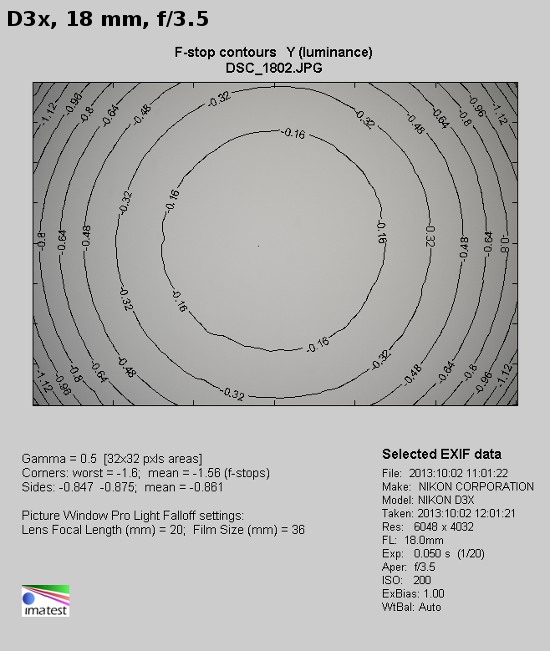 |
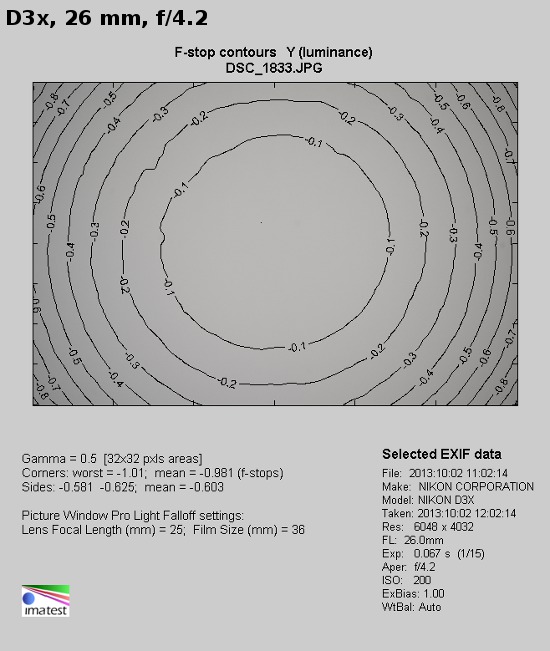 |
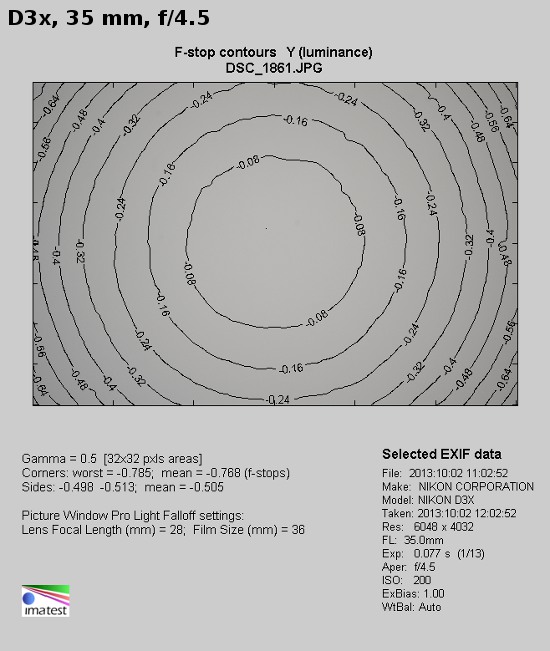 |






